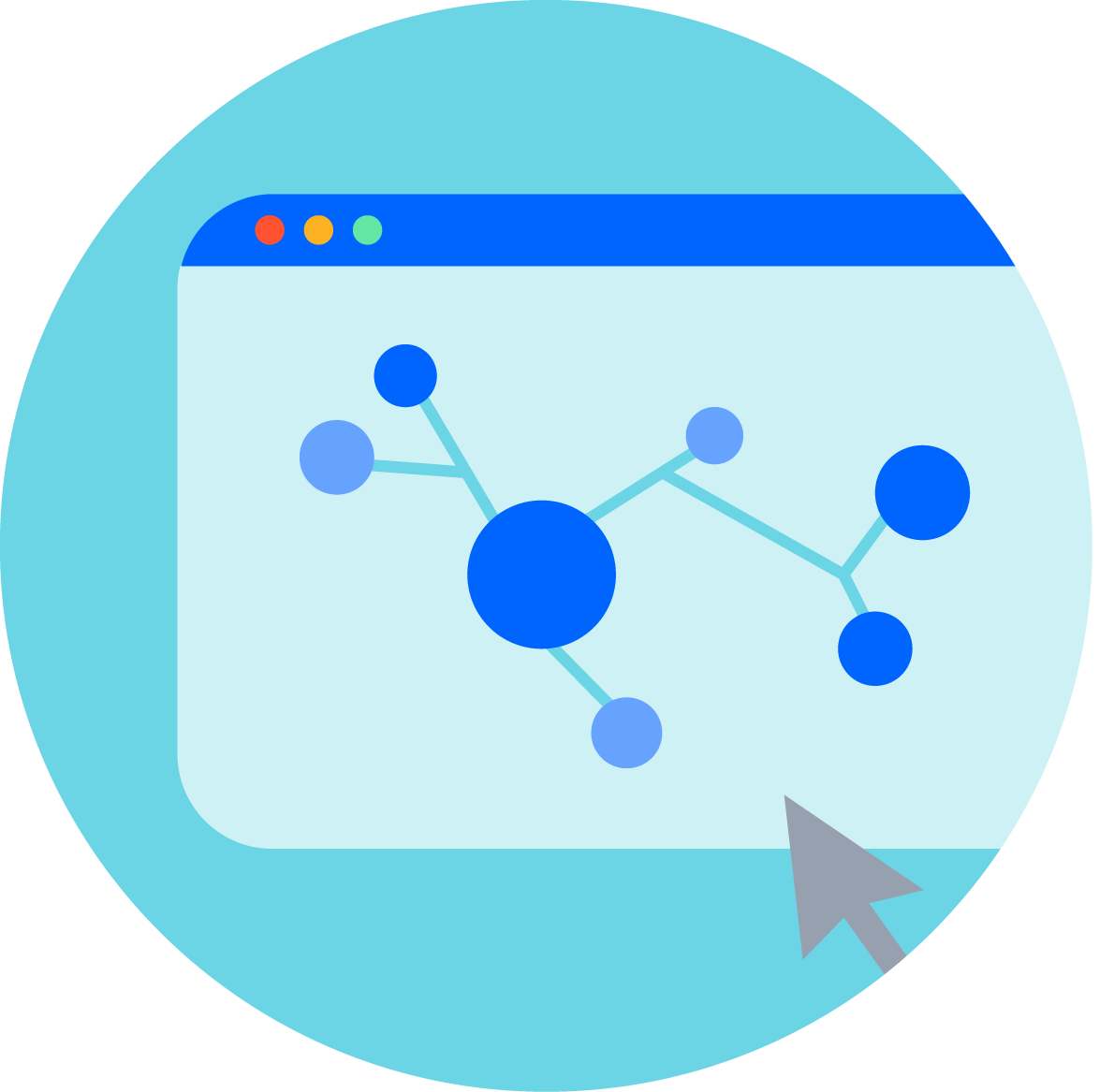Team Health Monitor
Effectively assess your team’s health based on the eight traits of high-performing teams.

PREP TIME
30m
Run TIME
90m
Persons
3-11
5-second summary
- Assess the team’s health against the eight attributes of successful teams.
- Select three attributes to focus on.
- Brainstorm solutions and create an improvement plan.
WHAT YOU WILL NEED
- Video conferencing with screen sharing.
- Digital collaboration tool (see templates).
- Optional: Butcher paper, red, yellow, and green markers.
- Optional: Notepads.
PLAY resources
How to perform a team health check
Assess your team’s health and determine an improvement plan.
What is a team health check?
Team health checks or team health monitors are like medical check-ups for a team's well-being, focusing on emotional wellness, relationships, work-life balance, and efficiency.
The goal is to identify and address issues that may affect functionality and productivity by evaluating metrics like happiness, morale, communication, trust, and psychological safety.
When should you run a Team Health Monitor?
We recommend running a Team Health Monitor on a quarterly cadence to help move along your journey to becoming a dream team.
What are the eight attributes of healthy teams?
According to Atlassian’s years-long research and our work across hundreds of teams internally and externally, we have ascertained eight attributes that make for a healthy and effective team. They are:
- Team cohesion: We have the mutual trust and respect necessary to be an effective team for healthy collaboration. We have a strong sense of connectedness between members.
- Balanced team: We have the right people, with the right skills, in the right clearly-defined roles. This enables us to successfully deliver the value for which this team is accountable.
- Encouraging difference: We seek and voice different viewpoints from diverse sources, both internally and externally, and we take the time to respectfully work through points of differences.
- Shared understanding: We share an understanding of our mission and purpose and our key milestones to deliver our strategic plan effectively as a team.
- Value and metrics: We understand the value we provide and the value back to the business, our definition of success and how that value is tracked and measured. We ultimately leverage our metrics to make decisions and action as necessary.
- Suitable ways of working: Our ways of working together within the team enable us to do our jobs effectively, whether we are distributed or co-located. This includes the tools we use, how we meet and collaborate, and how we make decisions.
- Engagement and support: It's clear to other teams how and when to engage with us, teams do this effectively and consistently receive the support they need to progress. We have a clear understanding of who we depend on, and who depends on us.
- Continuous improvement: We always make time to celebrate our successes as well as earnestly reflect on, take action against, and fulfill our improvement opportunities. We have regular and intentional feedback loops within and outside of the team to make improvement decisions.
3 benefits of engaged teams
Quarterly health monitors can help harness the benefits of engaged teams. According to Gallup, engaged teams have the following:
- Higher profitability: Companies with highly engaged employees are 21% more profitable than companies with disengaged employees.
- Reduction in turnover rates: Companies with engaged employees experience a 43% reduction in turnover rates.
- Increased productivity: Engaged teams are 18% more productive than low-engagement teams.
1. Initiate a Team Health Monitor Play
Est. time: 5 MIN
As the meeting facilitator, book 90 minutes with your team to run this Play. Send a brief description of the Play and review the attributes. Prepare the meeting based on your setup:
- Remote setup: Copy our template and invite your team.
-
In-person setup: Gather writing materials (butcher paper, whiteboard), red, yellow, and green markers, and notepads
The facilitator is also responsible for running the Play. It’s optional to assign a notetaker or let the facilitator be that as well.
Hi Team!
I recently sent out a calendar invite for a Team Health Monitor Play. The purpose of this Play is to evaluate our team’s health based on the eight attributes of successful teams. This workshop will take approximately 90 minutes.
Here’s a quick preview of the eight attributes we’ll be assessing against:
1. Team cohesion
2. Balanced team
3. Encouraging difference
4. Shared understanding
5. Value and metrics
6. Suitable ways of working
7. Engagement and support
8. Continuous improvement
You don’t need to prepare anything in advance. Please come to the meeting ready to participate.
Thank you!
Tip: For Bigger Groups
If your team includes eight or more people, you might want to divide into sub-groups and work through the initial ratings for each attribute. Then, come back together and converge on full-team ratings.
2. Share the agenda and rules of the road
Est. time: 2 MIN
At the start of the meeting, reiterate the purpose of the Health Monitor is to assess how well your team is working together and identify next steps to improve.
Next, you’ll want to share the workshop agenda and rules of the road.
- 5 min: Intro / Rules of the Road / Questions
- 35 min: Health Monitor Assessment (~8 min per attributed)
- 10 min: Prioritize Attributes / Identify Top 3
- 20 min: Breakout Session - Brainstorm Solutions and Next Steps
- 15 min: Group Reportouts / Action Items / Next Steps
1. You are present and attentive.
2. You are honest. Accept that we all see the world through a different lens and embrace those differences.
3. Listen with an intent to understand, not correct.
4. Take the spirit of the attributes. Ask questions if you need clarification don’t look down at your team/function.
5. Don’t sit on the fence.
6. I (the facilitator) talk less than you.
7. We are not comparing teams! Your results are for you alone. And if you do get a few reds and yellows, don't be disheartened - this is perfectly normal as teams evolve and it is unlikely it'll ever be all green. This exercise is about helping your team identify opportunities for improvement.
8. Always remember the retrospective prime directive: Regardless of what we discover, we understand and truly believe that everyone did the best job they could, given what they knew at the time, their skills and abilities, the resources available, and the situation at hand.
3. Establish voting criteria
Est. time: 2 min
Each of your participants will be asked to vote how well they think the team is doing against attributes with:
- “thumbs up” (green)
- “thumbs sideways (yellow)
- “thumbs down” (red).
Your team's perspective on red, yellow, and green will be unique. Use your intuition, and don't worry about establishing standardized criteria for each color—that only distracts from the discussion.
Explain to your team that when an attribute is being considered, the team will be asked to add their vote through a thumbs up, sideways, or down.
In the case of an in-person meeting, a notetaker should record the votes on a piece of butcher paper or whiteboard that all can see.
Tip: Don’t Settle
If your team tends to "settle" or call something "okay” when it really isn't, start with red as the default rating for all attributes, and make groups justify their way to a green rating.
4. Vote and capture feedback for each attribute
Est. time: 35 min
Now it’s time for the facilitator to follow these instructions to run the health monitor assessment:
- Read the attribute. As a facilitator, use the list above or our template to read each attribute and the description.
- Ask the team to reflect on how they will vote on each attribute. It’s best to hold off on voting until everyone is ready so that you avoid groupthink and bias.
- As a group, vote at the same time. If you are in-person, do a countdown before voting with thumbs. If you’re remote, try to cast your vote without being influenced by others.
- While thoughts are fresh, ask the team to take 1-2 minutes to capture their thoughts or feedback. Try to encourage everyone to capture “why” they voted the way they did and whatever comes top of mind. This helps us capture feedback as we go, especially since it’s unlikely the team will cover all attributes.
- Quick 2-3 minutes to discuss top-of-mind thoughts. This will help tease out any nuances to the voting, or be an opportunity for everyone to understand the “temperature” of the result to help with voting on the next step.
Once some thoughts are captured, move on to the next attribute. Plan on spending 5 minutes on each attribute.
Tip: Questions To Prompt Discussions
- Why did you vote the way you did for this attribute?
- What feedback on this attribute are you curious about or would like to learn more?
- Why do you think others voted this way?
5. Reflect and vote on the top three attributes
Est. time: 10 min
Review all the votes and feedback, pick 1-3 areas that the team would like to actively work on and improve.
These could be obvious areas that had red or yellow scores, or they could be areas that the team all assumed were green, but have some red votes.
6. Brainstorm solutions
Est. time: 20 min
Next, divide the team into three groups— one to brainstorm solutions for each priority attribute. Give each group 15- 20 mins to discuss solutions, document and share them. Here are a few questions to answer in the brainstorm session:
- What is the problem?
- What does success look like in six months?
- What actions could we take to reach that outcome?
- What action will we take NOW?
7. Create an improvement plan
Est. time: 15 min
Share action items, assign owners, and define the next steps. To keep the momentum going, schedule routine check-ins to track progress. Facilitators should thank the team for their efforts. High-performing teams thrive on collective effort, just like in a Health Monitor Play.
Follow-up
Set a regular cadence for Health Monitor checkpoints. Are your reds and yellows moving toward green? Have any of your greens slipped into the red? Celebrate your wins and address your challenges. Regular checks help keep momentum high and catch problem areas before they become too damaging.

Still have questions?
Start a conversation with other Atlassian Team Playbook users, get support, or provide feedback.
Other plays you may like
Meetings
Weekly Team Updates
Share how things are going—without scheduling another meeting.
Meetings
Page-Led Meetings
Better meetings start with a page that outlines the purpose, expected outcomes, and key discussion points.
Communication
User Manual
Help your teammates understand how best to work with you.
Debrief
Retrospective
Provide a safe space to discuss what worked and what didn’t.
Stay up to date
Get the latest Plays and work life advice when you sign up for our newsletter.
















